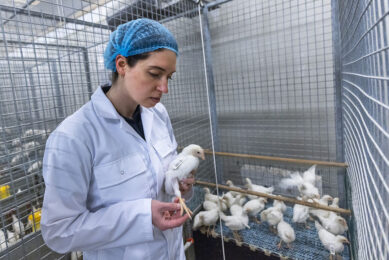Steep fall in multi-country Salmonella outbreak cases

The European outbreak of Salmonella Enteritidis appears to have subsided since control measures were implemented at egg farms and distribution points last autumn.
The outbreak peaked in the last week of September 2016 when around 60 cases were reported in one week. Control measures were subsequently implemented, and since then the number of cases has steadily decreased, with a maximum of 2 new cases reported each week in January and February 2017.
Fatalities reported in some cases
The new cases were reported by Belgium, Hungary, the Netherlands, Norway, Sweden and the United Kingdom. 14 countries have been affected since the outbreak began in May 2016. As well as the above, cases have been reported in Croatia, Denmark, Finland, France, Greece, Italy, Luxembourg and Slovenia. Croatia and Hungary have reported 1 fatality each.
Evidence from whole genome sequencing (WGS), as well as epidemiological, environmental and tracing investigations indicated that eggs originating from Poland are the vehicle of infection. Subsequent investigations traced the source of the outbreak to S. Enteritidis-contaminated farms of laying hens in Poland.
Check out the interactive Poultry Health Tool – with the latest insights on the 40+ most common poultry diseases.
Possible contamination higher in the production chain
Due to the possibility that S. Enteritidis might have been introduced at a higher level in the egg production chain, it is recommended that Poland further check the status of hatcheries and breeding flocks, especially those linked to the positive farms.
The data are contained in an updated rapid outbreak assessment published by EFSA and the European Centre for Disease Prevention and Control (ECDC).
Also interesting: S enteritidis risk greater in small flock eggs
Affected countries should continue sharing information on the epidemiological, microbiological and environmental investigations, including issuing relevant notifications through the Rapid Alert System for Food and Feed (RASFF) and the Early Warning and Response System (EWRS), the latter representing the official channel for notifying serious cross-border threats to health.













